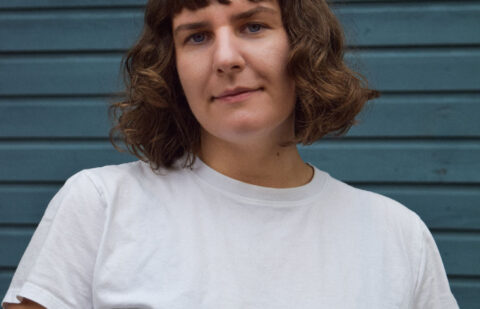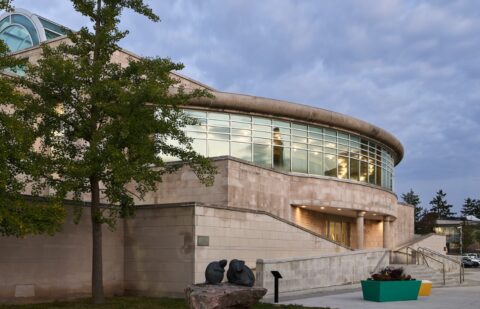
Tom Hodgson, Yellow Hydrant, 1953; oil, sand and acrylic ? on masonite; Gift of Martin Vagners, 1989
This post comes from our Senior Curator, Linda Jansma.
‘This exhibition is not a compact to agree, but rather the expression of a long repressed desire on the part of eleven painters to disagree harmoniously in terms visually indigenous to this age.’
While a fall 1953 meeting at Alexandra Luke’s cottage officially launched Painters Eleven as Ontario’s first abstract painting group, their inaugural exhibition took place at Roberts Gallery in Toronto from February 13 – 27, 1954. The above quote is taken from the exhibition flyer; indeed, the group wasn’t interested in presenting a manifesto similar to the Automatistes’ Refus Global, but in seeking opportunities to show their abstract work to the public.
Jock Macdonald, one of the oldest members of P11, would write in a letter to friends about that early exhibition: “It was the bombshell of the Art world in Toronto. It set the established and recognized artist on their ears.” Roberts Gallery had a huge attendance for the exhibition opening for which each member could contribute three paintings. As one Toronto Daily Star reporter noted: “The show has one common denominator: it gives conservatism a polite but firm kick in the pants and blazes independent trails.”
The RMG has organized an exhibition celebrating P11’s first sixty years and has included early work by each of its members. The gallery’s first mandate emphasized collecting and exhibiting the work of the group and the RMG now has the largest collection of work by Painter’s Eleven, as well as an extensive archive. Four paintings from that first exhibition are part of the RMG permanent collection, including Forest by Kazuo Nakamura, Yellow Hydrant by Tom Hodgson, and Tumult for a King by Harold Town (a Varsity reviewer remarked, about the latter painting, that it was “rather violent, too violent perhaps”).
In the invitation for the group’s second Roberts exhibition, they further clarified their aims:
‘There is no manifesto here for the times.
There is no jury but time. But now
There is little harmony in the noticeable disagreement.
But there is a profound regard
For the consequences
Of our complete freedom’
After sixty years, the jury is back, and the verdict, is no doubt, positive.

Harold Town; Tumult for a King; 1953- 54; oil and Lucite 44 on masonite; Gift of the artist’s estate, 1994



